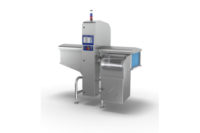Changes to food safety are largely driven by US legislation, with most countries now converging towards the Food & Drug Administration’s (FDA’s) Food Safety Modernization Act (FSMA) standards. FSMA has shifted the focus from responding to foodborne illness to preventing it. This is driving the adoption of track-and-trace technologies, with imports a focus in the FDA’s plans.
From HACCP to HARPC
Under the FSMA, the longstanding Hazard Analysis and Critical Control Point (HACCP) principles have been superseded by Hazard Analysis and Risk-Based Preventive Controls (HARPC). The biggest difference is that HARPC standards extend beyond Critical Control Points. Food processors must document all potential product risks, including planning for potential terrorist acts, intentional adulteration and food fraud.
Canada too updated its food safety system at the start of 2019, implementing new Safe Foods for Canadians Regulations. As well as affecting the Canadian food industry, it requires companies that export to Canada, especially the United States, to have an SFC license. Canada’s new rules place greater emphasis on hygiene and hazardous-based preventative controls. This includes a new standard on recording the chain of custody from the start of production to point of sale.
The rise of retailer power
Food producers and packers clearly need to comply with legislative requirements. But in reality, it is supermarkets and club stores who are driving food safety compliance right down the food chain – a trend that is partly due to the power consumers now wield through social media. In the event of a food safety incident, an individual may not even bother to take up the issue with the retailer or food producer, instead going straight to social media. As a result, supermarkets too are taking food safety matters into their own hands and insisting that all suppliers install metal detection if they are to retain shelf space.
It is a trend that is also being played out in Europe, particularly in the UK, where retailer codes of practice are king. Issue 8 of the British Retail Consortium’s Global Food Safety Standard went live in 2019. With this latest version, there is a strong emphasis on hygiene and pathogen contamination.
Inspection strategies for staying ahead of the curve
There are various steps food producers and packers can take to keep on top of regulator and retailer food safety demands:
1. Contaminant detection: choose kit that reflects the risk
To determine whether metal detection or x-ray is the best option, food manufacturers should first establish the potential sources of contamination on the particular product line. In most instances, metal remains the most common contaminant.
2. Select inspection equipment with inbuilt record keeping capabilities
Contact Reporter software is an automated record keeper developed by Fortress to help food processors keep track of and record logs for rejects, tests, settings. This facilitates the documenting of potential product risks and helps to narrow the time frame during which a problem can go undetected and reduces the amount of suspect product that must be discarded or recalled in the event of an incident.
3. Check that metal detection systems are failsafe
If a fault with the reject system means that a contaminant is detected but not rejected, the line should stop automatically until the situation is resolved. Both detector performance and fail-safe capability should be tested regularly, ideally using an automated test system to eliminate human error, with results kept on record to support traceability.
4. Minimize false rejects
False rejects are the biggest threat in terms of line downtime and product waste. You want to be sure that when you stop the line because of detected metal, there is really an issue to address. Fortress’ game-changing simultaneous multi-frequency technology, available on its Interceptor metal detector, enables producers of conductive products like meat, dairy and prepared foods to combine maximum detection sensitivity with minimal false rejects.
5. Get compliant and stay compliant!
The Fortress ‘Never Obsolete Commitment’ helps customers stay compliant with future retailer COP curveballs. A backward-compatibility program, it enables customers to upgrade any existing Fortress metal detector - even those built 20 years ago. An upgrade as a result of a change to a retailer Code of Practice will only set a processor back several hundred rather than thousands of dollars.
For more information visit www.fortresstechnology.com.









